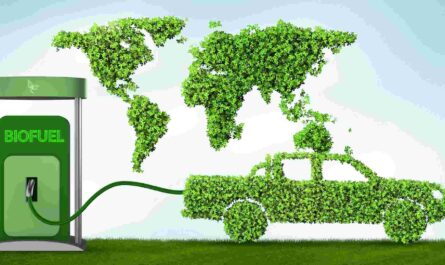Synthetic fuel, also known as synfuel, is a non-petroleum hydrocarbon liquid that can serve as a synthetic replacement for gasoline, diesel, jet fuel, and other petroleum-based fuels. Synfuels are produced from various feedstocks including coal, natural gas, biomass, or even municipal waste through chemical processes like gasification, pyrolysis or Fischer-Tropsch synthesis. These allow for the conversion of carbonaceous resources into a range of synthetic liquid fuels.
Gasification of Coal and Biomass
One method used to produce synfuel is through gasification, which is a process that converts organic or fossil fuel based carbonaceous materials into carbon monoxide, hydrogen and carbon dioxide. In coal gasification, coal is heated with steam and oxygen or air under pressure, producing what is known as synthesis gas or “syngas.” This syngas can then be further processed using the Fischer-Tropsch process to produce liquid fuels. Biomass sources like wood waste or even municipal solid waste can also be gasified to produce syngas. With biomass, it offers a more sustainable feedstock compared to coal.
The Fischer-Tropsch Process
The Fischer-Tropsch process is used to convert syngas produced during the gasification process into Synthetic Fuel hydrocarbons. It was originally developed in Germany in the 1920s as a method to produce liquid fuels from coal. The syngas undergoes catalytic reactions to build up carbon-carbon bonds and form heavier hydrocarbon molecules. By varying conditions like catalysts, temperatures and pressures, the Fischer-Tropsch process allows for the tailored production of synthetic crude or synthetic naphtha as well as waxes that can be further refined into fuels like diesel, jet fuel and gasoline.
Pyrolysis of Biomass and Plastics
Another method is fast pyrolysis which uses heat in the absence of oxygen to break down carbonaceous feedstocks into petrochemicals. With biomass, fast pyrolysis produces an intermediate liquid bio-oil that can be upgrade further into renewable fuels and chemicals. Pyrolysis technologies are also being explored as a way to process post-consumer plastic waste streams into synthetic crude oil. By diverting plastic waste from landfills and recycling it through fast pyrolysis, synthetic oil can be produced which can displace the need for petroleum in fuel and chemical production.
Hydrotreating and Upgrading
The synthetic crude and fuel intermediates produced via gasification and pyrolysis still need to undergo further hydrotreating and upgrading processes before they can meet fuel specifications and be blended with or replace conventional fuels. Hydrotreating involves hydrogenation under high temperatures and pressures over catalytic beds to remove any oxygen, nitrogen or sulfur impurities from the synfuel components. Hydrocracking may also be applied to break down larger molecules into lighter fractions like diesel, naphtha and liquefied petroleum gas. These upgrading processes ensure the Synthetic Fuels meet quality, performance and emissions standards for usage in vehicles and aircraft.
Advantages of Synfuels
With global demand for energy and fuels projected to rise significantly in the coming decades, synfuels offer several advantages compared to only relying on conventional crude oil reserves:
Feedstock flexibility: Synfuels can be produced from a variety of carbon resources including fossil fuels, biomass or waste streams. This diversifies supply options beyond solely petroleum.
Energy security: Domestic production of synfuels from coal, natural gas or biomass reduces dependence on foreign oil imports and vulnerability to supply disruptions.
Carbon management: Integrated with carbon capture and storage technologies, synfuel production offers the potential to mitigate greenhouse gas emissions compared to conventional fuels.
Sustainable option: Synfuels production using biomass or waste plastic feedstocks represents a more sustainable source that displaces fossil fuels.
Military uses: Early synfuel technologies allowed for self-sufficiency in liquid fuel production, which remains strategically important for military and national security.
Commercialization Challenges
While synfuels offer promising alternatives to conventional oil, significant challenges remain for full commercialization at a large industrial scale:
High production costs: Current synfuel production costs using gasification or pyrolysis technologies are still higher than extracting and refining crude oil. Further technological advances are needed to drive down costs.
Conversion efficiencies: More efficient conversion processes are required to maximize energy yields from feedstock inputs like coal to finished liquid fuels.
Infrastructure compatibility: Ensuring synthetic components are fully compatible with transportation fuel pipelines and vehicle engines currently designed for gasoline and diesel.
Scale-up needs: Large scale industrial plants on par with oil refineries will require substantial capital investments to establish synfuel supply chains.
Overcoming these hurdles will be key for synfuels to compete commercially against established petroleum fuels and help transition global energy systems to more sustainable liquid fuel options. Governments and companies continue working to advance these promising alternative fuel technologies.
Note:
1. Source: Coherent Market Insights, Public sources, Desk research.
2. We have leveraged AI tools to mine information and compile it.




